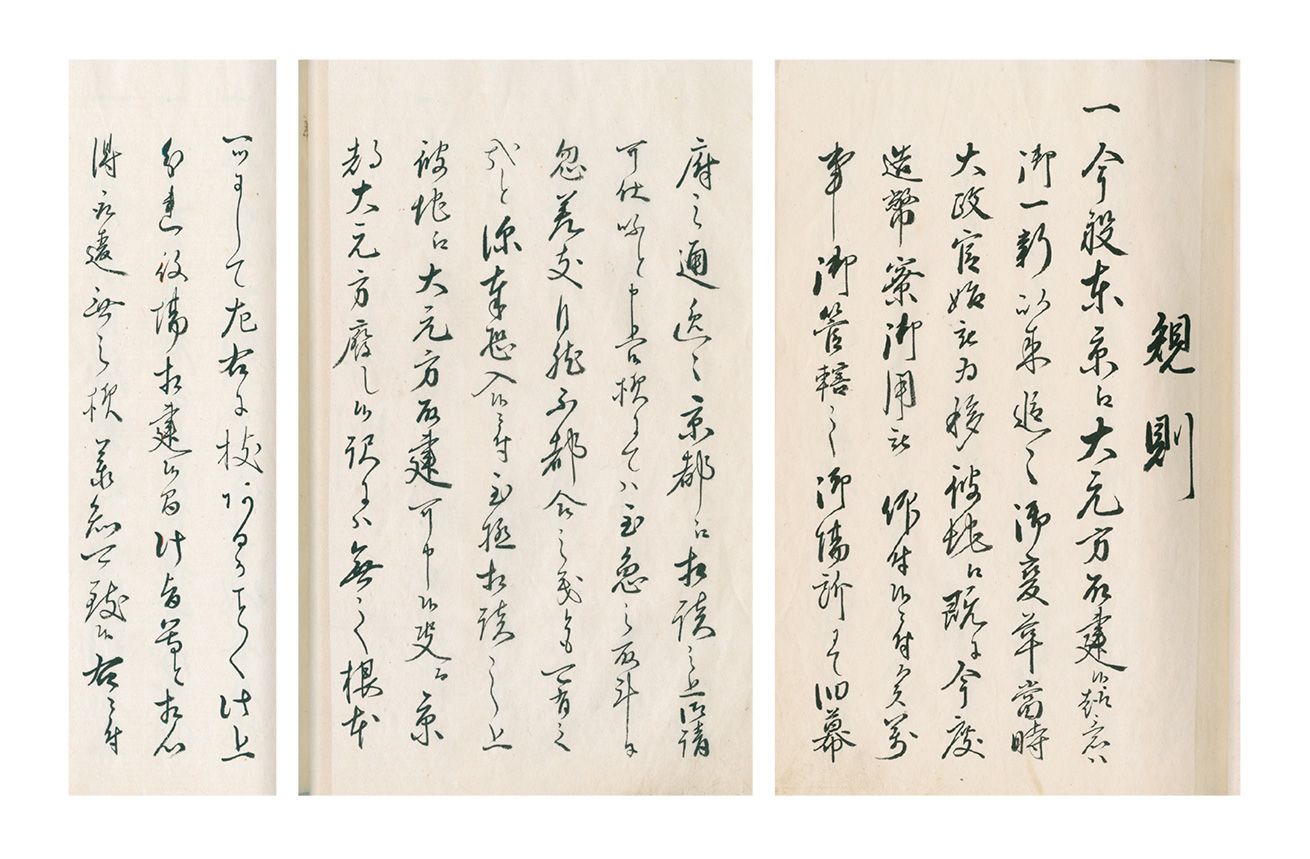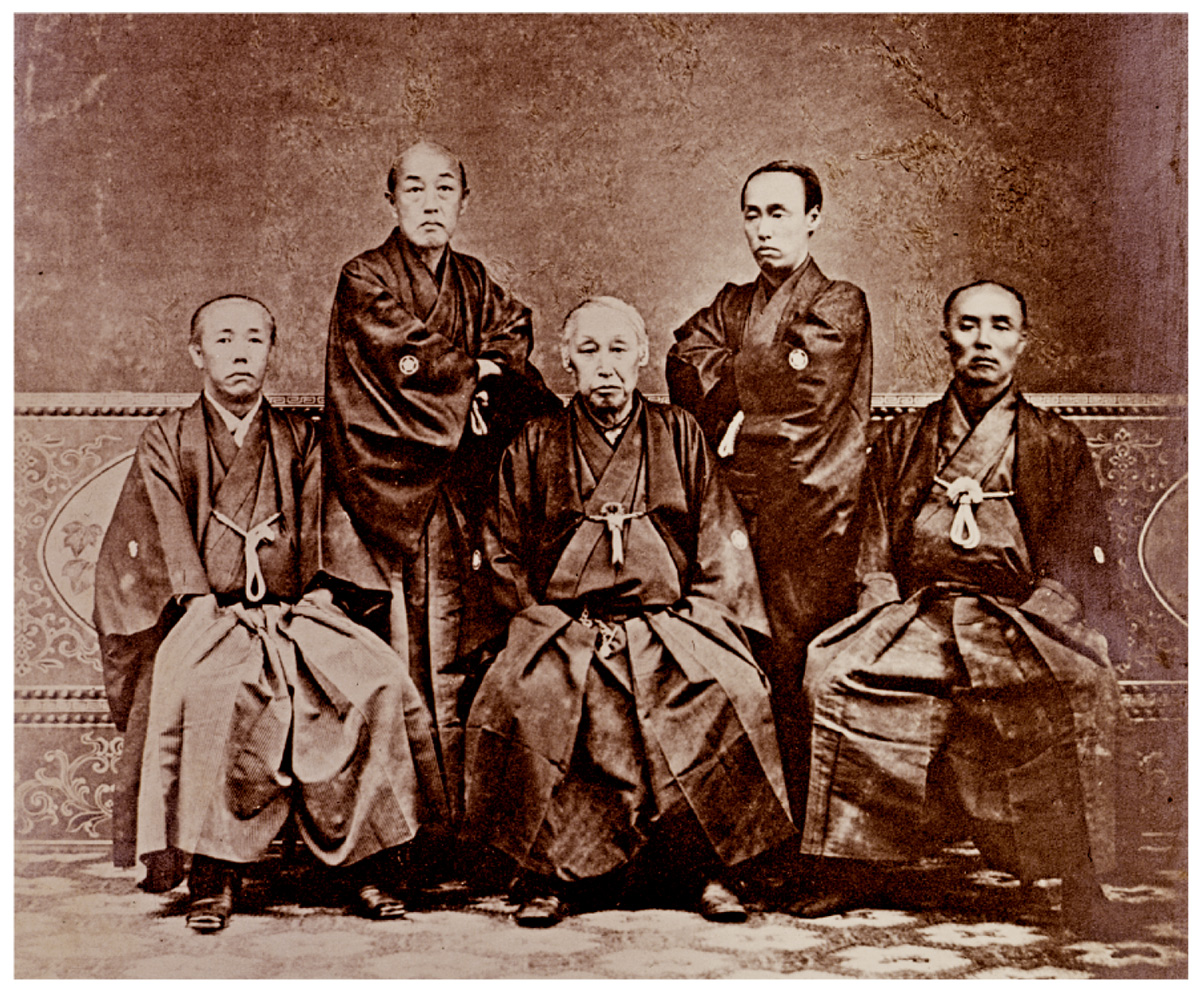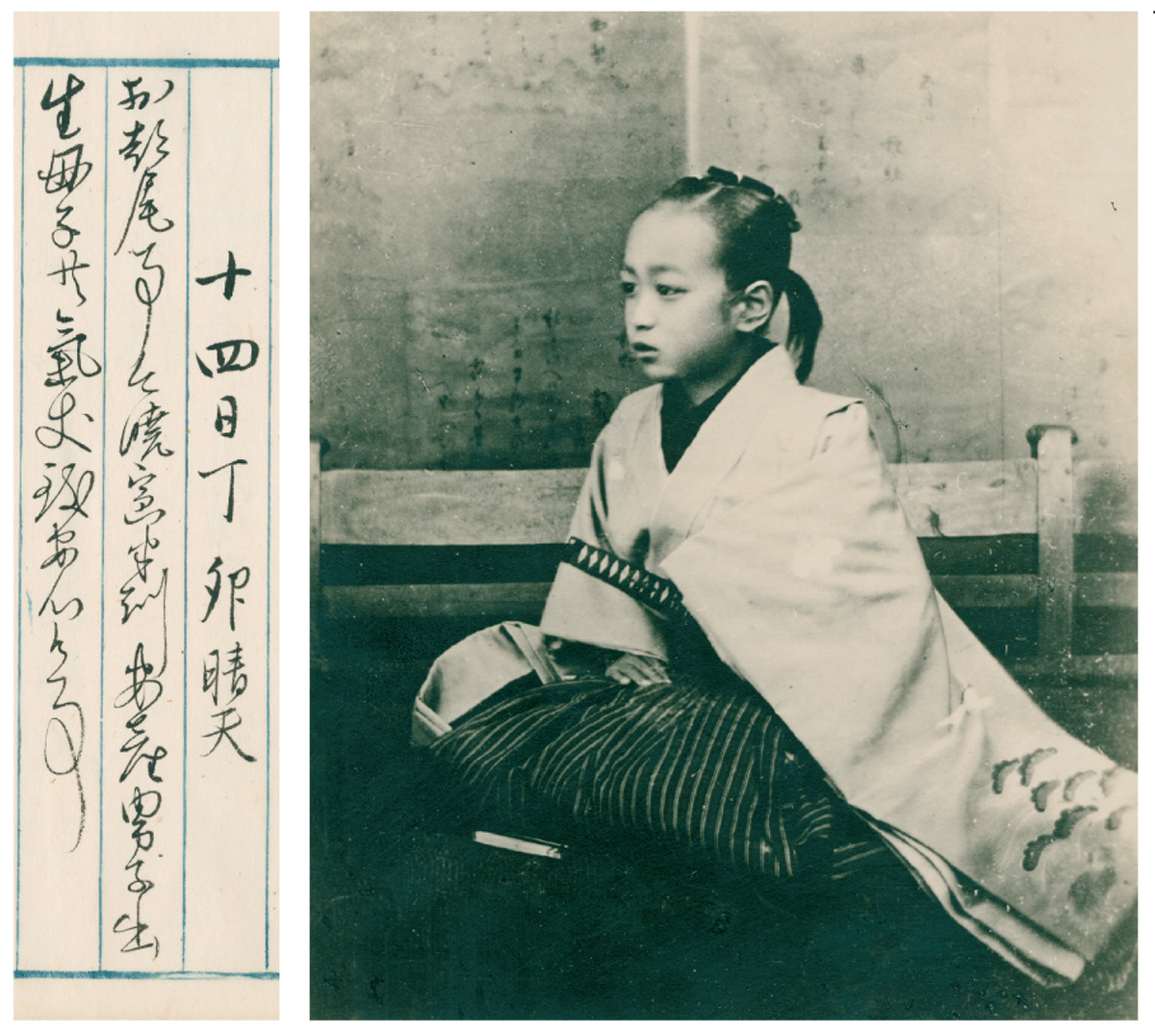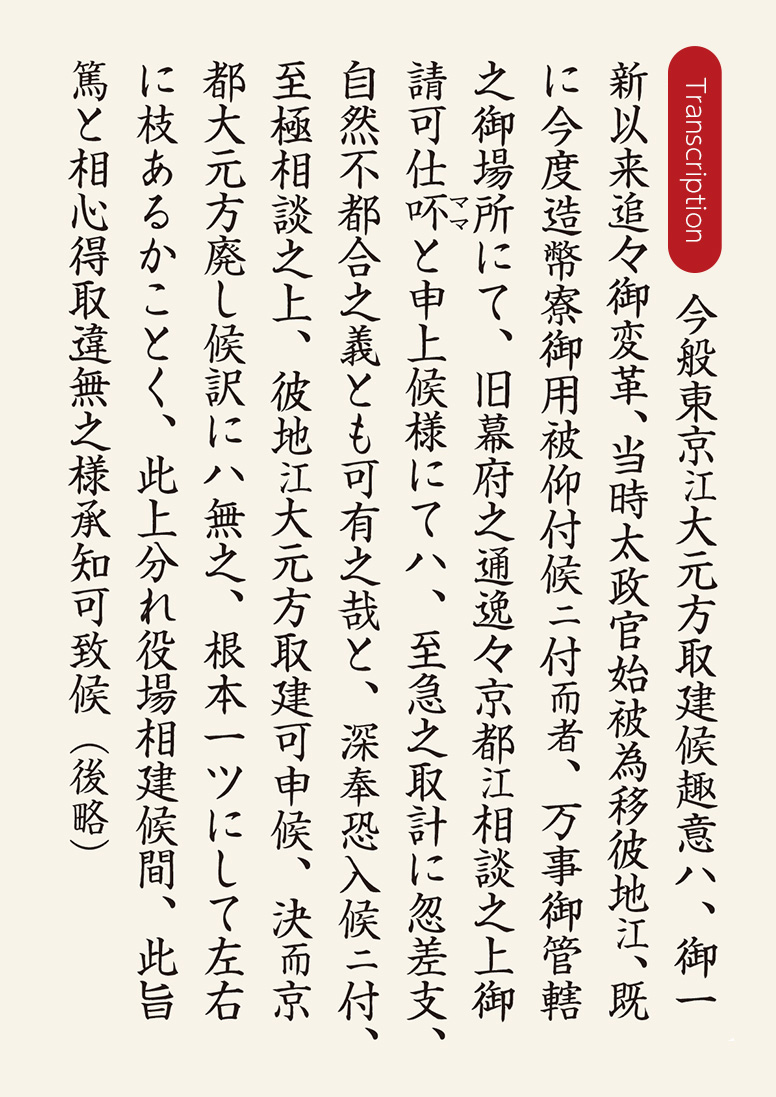24 Leaders of the Early Meiji Era

The Omotokata During the Late Shogunate and Imperial Restoration
Three men guided the Omotokata, Mitsui’s highest decision-making body, during the chaos of the shogunate’s final years: the head of the Kita family, Takayoshi, his son Takaaki, and Takayoshi of the Koishikawa family (→Fig. 24b). After the passing of a series of important Mitsui Domyo, Takayoshi of the Koishikawa family became a senior manager (Motokatagakari,→10) in 1859, followed by Takaaki in 1861, when the former was 35 and the latter was 24.
Mitsui Takayoshi (1808-1885) Eighth head of the Kita family. He succeeded to the name Hachiroemon in 1837 and served as overall head of the Mitsui families for 42 years. Including Takamine (→Fig. 24c), a future head of the Kita family, Takayoshi fathered ten sons and five daughters, four of whom would die young.
Mitsui Takaaki (1837-1894) Ninth head of the Kita family. He was the eldest son born to Takayoshi and Rei, his first wife. He became head of the family in 1878. He is said to have been skilled at gathering information relating to the pro- as well as anti-shogunate factions (→23), but his health was not robust, and in 1885 he stepped aside as family head in favor of adopted son Takamine.
Mitsui Takayoshi (1823-1894) Seventh head of the Koishikawa family. He was the eighth son of Takahide, the fifth head of the Minami family. He became the adopted son of Takamasu, sixth head of the Koishikawa family, and had a meticulous and strict personality. A prolific writer from an early age, he left behind a diary in his own hand spanning more than 40 volumes.
In addition, supporting these Mitsui descendants while promoting organizational reforms during the early Meiji Era, were senior manager Saito Senzo (after 1871, as Junzo) and Minomura Rizaemon (→22), who was specially invited to join Mitsui.
Heading for Tokyo
In October 1871, the Omotokata was established in Tokyo. Saito and Minomura recommended that Mitsui’s business center of gravity be shifted to Tokyo, and the Omotokata be reformed and strengthened. Takayoshi (Kita) would head the Omotokata, with Takayoshi (Koishikawa) and Takaaki as directors, and the three men left Kyoto and arrived in Tokyo the following November, accompanied by their advisor Takakiyo, the sixth head of the Nagasakacho family. The following January, the Tokyo Omotokata office was established in the Kaiunbashi Kabutocho district. From then forward, important decisions were taken by the Tokyo Omotokata.
Reorganization
As a result of discussions between Takayoshi (Kita), Takaaki, Takayoshi (Koishikawa), Takakiyo, as well as senior advisors Saito Junzo and Minomura Rizaemon, important decisions were taken concerning Mitsui’s future direction in the early Meiji Era, including spinning off the kimono fabric and other businesses (→26). In particular, Minomura-who replaced Takayoshi as head of the Omotokata in 1873-demonstrated superior management abilities, resolutely reforming and strengthening the organization. In addition to unifying the financial division (Ryogaedana) and the chartered purveyor business (Goyosho), which had been carried over from the Edo period, he also downgraded the Kyoto Omotokata to the level of a branch office, and positioned the Tokyo Omotokata at the center of Mitsui’s management structure. In 1874, after maneuvering its way through the chaos of the shogunate’s collapse and the early years of Meiji, Mitsui established its headquarters at the newly built Surugacho Mitsui-gumi House (→28), establishing a new business foundation in banking, trading, and mining.

During the Edo period, the Kyoto-based Omotokata oversaw the business activities of Mitsui’s two business divisions: the Hondana Ichimaki, engaged in sale of kimono fabric, and the Ryogaedana Ichimaki, engaged in money exchange (→10). But with the establishment of Japan’s new government, Mitsui was faced with the need to change the location of its business headquarters.
On October 20, 1871, the Omotokata convened an extraordinary meeting. At this meeting, it was decided that Mitsui Takayoshi, the head of the Kita family, and four senior Omotokata members, representatives of Mitsui Domyo, would relocate to Tokyo. Omotokata rules stated clearly that this decision would mean the effective shifting of the Omotokata to Tokyo as well. However, since significant resistance was expected to moving the Omotokata from its traditional seat in Kyoto, it was emphasized that two Omotokata-one in Tokyo, one in Kyoto-would exist on an equal footing for time being.
Translation
The Omotokata will be located in Tokyo. Many changes have occurred since the fall of the shogunate and the establishment of the new government, which has also moved to Tokyo. As of June, we have already been chartered to engage in currency exchange services for the government (→25). If we go on telling the government that we will “consult with Kyoto and reply,” we will be unable to respond in a timely manner, which will be an inconvenience. However, while we will establish the Omotokata in Tokyo, we will maintain offices in both Tokyo and Kyoto, dividing their respective roles, so that the result will be like a single tree trunk with branches extending to the left and right.

Front, from left: Mitsui Takayoshi (Koishikawa), Takayoshi (Kita), and Minomura Rizaemon. Rear, from left: Saito Senzo (Junzo) and Mitsui Takaaki.

Isonosuke was Mitsui Takayoshi’s 13th child. He was born January 14, 1857 to Takayoshi’s second wife, Tsuo. He later changed his name to Takamine, becoming the tenth head of the Kita family (→38). Takayoshi wrote in his diary (above), “Tsuo gave birth to a boy early this morning. Both mother and child are in good health, so I can rest easy.”

